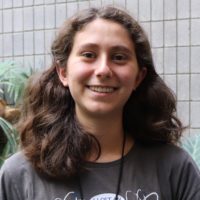
Project Summary:
Robustness is a property of living things by which they can grow organs of the same size and shape despite environmental differences. Even though robustness is common to most living organisms, the mechanisms behind robust growth are not well understood. The Arabidopsis thaliana mutant variable organ size and shape 3, or vos3, has random outgrowths and lumps on the outer surface of its sepals (leaf-like organs surrounding floral organs), whereas wild-type (WT) sepals are smooth. The vos3 mutant exhibits a loss of robustness in sepal development compared to wild-type plants. We were curious as to whether cellular growth differences between WT and vos3 explained the formation of these outgrowths and creases. We used MorphoGraphX image processing software to analyze images of live-imaged WT and vos3 sepals, where images were taken every 24 hours for 6 days, which allowed us to extract information about cellular growth parameters for the WT and vos3 plants. We found that the vos3 and WT sepals showed different patterns of magnitude and distribution for area growth rate, cell division rate, and anisotropy. Overall, this suggests that uniform, consistent patterns of cell growth are required for robust organ formation, and that disrupting these patterns can lead to the development of abrupt morphologies. While this project offered insight into the cellular growth differences between WT and vos3 sepals, it did not provide information about how the lumps and creases on vos3 sepals form, which is an interesting avenue for further research.
My Experience:
I really enjoyed working in the Roeder Lab this summer. I had an opportunity to learn new lab techniques, such as confocal microscopy and DNA extraction. I also had the chance to learn how to use image processing software, something I had never done before. The lab was very welcoming, and my mentor, Dr. Avilash Singh Yadav, was patient and supportive as I learned new lab techniques and computer software. Before this internship, I had no experience with plant biology and didn’t realize what a varied and interesting field it was. It was fascinating to learn about the research being conducted in this area, both through conversations with members of my lab and the weekly seminars for interns.
